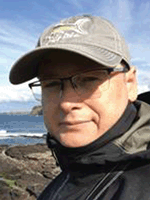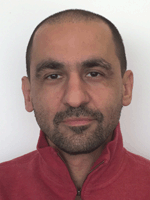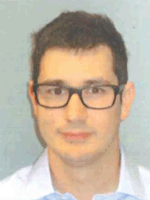Australian national ocean bottom seismograph fleet advances conventional exploration
Alexey Goncharov A F , Michal Malinowski B , Dejan Sekulic C , Ashby Cooper A , Peter Chia D , Alexander Gavrilov E and Garrick Paskos AA Geoscience Australia, GPO Box 378, Canberra, ACT, 2601, Australia.
B Institute of Geophysics, Polish Academy of Sciences, Księcia Janusza, 64, 01-452 Warsaw, Poland.
C ION Geophysical Inc., 2105 City West Blvd., Houston, TX 77042, USA.
D Shell Australia, Shell House, 562, Wellington Street, Perth WA 6000, Australia.
E Curtin University, B301 Hayman Road, Bentley, WA, 6102, Australia.
F Corresponding author. Email: alexey.goncharov@ga.gov.au
The APPEA Journal 57(2) 738-743 https://doi.org/10.1071/AJ16138
Accepted: 17 March 2017 Published: 29 May 2017
Abstract
A fleet of new Australian ocean bottom seismographs (OBSs) have broadband frequency range, and similar instruments are available at only five or six institutions globally. These OBSs are multi-purpose devices able to record passive-source seismic data (earthquakes, ambient noise) as well as active-source (airgun generated) data and, at the same time, to monitor seismic survey noise and whale calls for environmentally responsible exploration. OBS data collected during commercial seismic surveys in Australian waters prove that it is possible to image the velocity distribution of the whole crust and upper mantle from analysis of both reflected and refracted phases generated by an industry-standard broadband airgun array. This means that valuable information on a regional scale can be obtained as a by-product of commercial seismic surveys. Three-component recording capability of OBSs allows analysis of S-waves in addition to the P-waves that are conventionally used in marine reflection surveys.
Keywords: deep crust, earthquakes, passive seismic, seismic refraction, seismic survey noise, whales’ calls.

Dr Alexey Goncharov has a PhD in geophysics from the St-Petersburg Mining Institute in Russia. Alexey has completed several geoscience projects in Australia: onshore in Mount Isa, and for petroleum tasks, offshore on North West, South West and Southern Margins, and in the Australian Antarctic Territory in collaboration with Russian scientists. For several years Alexey has led the Basement and Crustal Studies project at Geoscience Australia; and since 2013 has led the establishment of the Australian national fleet of ocean bottom seismographs. |

Dr Michal Malinowski is an Associate Professor at the Institute of Geophysics, Polish Academy of Sciences in Warsaw, where he is a Head of the Seismic Imaging Team. His research interests involve deep crustal structure, seismic data processing and imaging including advanced technologies like full-waveform inversion. He is a member of EAGE and SEG. He serves as a topical editor for Solid Earth (EGU) and Acta Geophysica (Springer). |

Mr Dejan Sekulic completed the MS in geophysics at University of Houston in 1997. He joined GXT/ION in January 2003 as a senior geophysicist, after working with Schlumberger, Western Geco and Advance Data Solutions for 6 years combined. After joining GXT/ION Dejan worked on depth imaging projects in various ION offices. Dejan transferred to ION London office in 2011 as a marine project imager for the North Sea and West Africa, and was responsible for coordinating projects in Angola with our in-country JV partner. Dejan is an SEG life member. |

Mr Ashby Cooper received a BSc (Hons.) majoring in geology, geophysics and mathematics from the University of Tasmania in 2014. He is proud to be involved in the establishment of Australia’s new OBS fleet, where he took part in survey acquisition and developed software for data processing and interpretation. Ashby is currently working on the AusArray project which aims to achieve high resolution coverage of Australia with broadband passive seismometers. |

Mr Peter Chia, Principal Geophysicist at Shell Australia, joined Shell in 1984 and has worked in Seismic operations, processing and QI services. Peter has a BSc (Hons) in Geophysics from the University of Manitoba, Canada, and is a member of EAGE and ASEG. |

Prof Alexander Gavrilov received an MSc degree in physics from the Lomonosov Moscow State University in 1979, and a PhD degree in acoustics from Andreyev Institute of Acoustics in Moscow in 1995. Since 1979 he worked in the Arctic Acoustics Department of the Andreyev Institute and since 1995 at the Shirshov Institute of Oceanology of the Russian Academy of Science. He joined the Centre for Marine Science and Technology (CMST) at Curtin University in Perth, Australia, as an Associate Professor in 2003. His research interests include modelling of underwater sound emission and propagation, remote acoustic observations of climate driven environmental changes in the Arctic and Antarctic, acoustic scattering from the seafloor, passive acoustic monitoring of marine mammals and acoustic array processing. |

Mr Garric Paskos received a Bachelor of Computer and Mathematical Sciences and Bachelor of Engineering (Electrical and Electronic) degrees from the University of Western Australia. He completed several rotations as a graduate at Geoscience Australia, including a project on environmental aspect of the ocean-bottom seismograph data. He is currently a Geophysical Networks officer, Geomagnetism Team, Geoscience Australia. |
References
Bale, R., Gratacos, B., Mattocks, B., Roche, S., Poplavskii, K., and Li, X. (2009). Shear wave splitting applications for fracture analysis and improved imaging: some onshore examples. First Break 27, 73–83.Bellingham, P., and McDermott, K. (2014). The Australian North West Shelf: New insights from Deep Seismic. GeoExPro 11, 57–62.
Double, M. C., Andrews-Goff, V., Jenner, C., Jenner, M., Laverick, S. M., Branch, T. A., and Gales, N. J. (2014). Migratory Movements of Pygmy Blue Whales (Balaenoptera musculus brevicauda) between Australia and Indonesia as Revealed by Satellite Telemetry. PLoS One 9, e93578.
| Migratory Movements of Pygmy Blue Whales (Balaenoptera musculus brevicauda) between Australia and Indonesia as Revealed by Satellite Telemetry.Crossref | GoogleScholarGoogle Scholar |
Gavrilov, A. N., and McCauley, R. D. (2013). Acoustic detection and long-term monitoring of pygmy blue whales over the continental slope in southwest Australia. The Journal of the Acoustical Society of America 134, 2505–2513.
| Acoustic detection and long-term monitoring of pygmy blue whales over the continental slope in southwest Australia.Crossref | GoogleScholarGoogle Scholar |
Gavrilov, A. N., and Parsons, M. J. (2014). A Matlab tool for the characterisation of recorded underwater sound (CHORUS). Acoustics Australia 42, 190–196.
Goncharov, A., Cooper, A., Chia, P., and O’Neil, P. (2016). A new dawn for Australian ocean-bottom seismography. The Leading Edge 35, 99–104.
| A new dawn for Australian ocean-bottom seismography.Crossref | GoogleScholarGoogle Scholar |
Malinowski, M., and Goncharov, A. (2016) Using OBS data during regional seismic surveys: a case study from the Exmouth Plateau, offshore NW Australia, 17th International SEISMIX Symposium, Aviemore, Scotland. (Ed. Rawlinson, N.).
Monnier, S., Lumley, D., Kamei, R., Goncharov, A., and Shragge, J. (2016). Towards seismic waveform inversion of long-offset Ocean-Bottom Seismic data for deep crustal imaging offshore Western Australia, Abstract S41A–2735 presented at 2016 Fall Meeting, AGU, San Francisco, Calif., 12–16 Dec.
Morgan, J., Warner, M., Bell, R., Ashley, J., Barnes, D., Little, R., and Jones, C. (2013). Next-generation seismic experiments: wide-angle, multi-azimuth, three-dimensional, full-waveform inversion. Geophysical Journal International 195, 1657–1678.
| Next-generation seismic experiments: wide-angle, multi-azimuth, three-dimensional, full-waveform inversion.Crossref | GoogleScholarGoogle Scholar |
Operto, S., Virieux, J., Dessa, J. X., and Pascal, G. (2006). Crustal seismic imaging from multifold ocean bottom seismometer data by frequency domain full waveform tomography: Application to the eastern Nankai trough. Journal of Geophysical Research. Solid Earth 111, B09306.
Salgado Kent, C. P., Gavrilov, A. N., Recalde-Salas, A. Burton, C. L. K., McCauley, R. D. and Marley, S. (2012). Passive acoustic monitoring of baleen whales in Geographe Bay, Western Australia. In ‘Proceedings of Acoustics 2012, Annual Conference the Australian Acoustical Society Conference, Fremantle, Western Australia, 21–23 November 2012’. (Ed. McMinn, T.), p. 533–540.
Southall, B., Bowles, A., Ellison, W., Finneran, J., Gentry, R., Greene, C., Kastak, D., Ketten, D., Miller, J., Nachtigall, P., Richardson, W., Thomas, J., and Tyack, P. (2007). Marine Mammal Noise Exposure Criteria: Initial Scientific Recommendations. Aquatic Mammals 33, .


